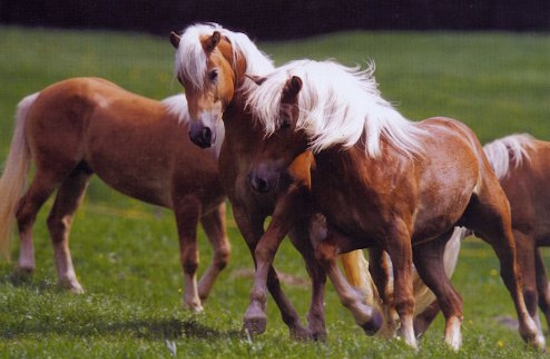The Haflinger
The place of origin of the Haflinger Horse is Alto Adige, where its historical phase began with the Folie stallion in 1874. In 1926 the first selected stations were established in the other regions of Italy and therefore the first herd book of this breed was launched, which was called 'Book of the origins of the Haflinger breed in Italy', marked with the letters L.A.I.
Today, after 80 years, the Haflinger horse has seen its expansion into 20 regions of the 21 into which Italy is divided, from the Alps to Sicily. Currently, Haflinger horses are found in 70 provinces for a total of approximately 14,000 animals. Over 10,000 of them are checked for selection purposes, of which 260 stallions and 6,000 mares.
The Haflinger Horse Stud Book, which represents the tool for the selective improvement of the Breed, tends to enhance production on both a technical and economic level. It has the aim of valorizing the Haflinger horse through the production of resistant and lively subjects for mass riding and equestrian tourism activities.
The modern Haflinger horse is a typical mesomorphic horse with a distinct appearance, harmonious, solid, correct forms, with the right balance between all the organic systems. Docile but energetic temperament with a good disposition for dynamic activity with a balance between speed and power. In particular, the Italian Herd Book takes care of improving the typicality of the breed.
The ideal subject has relatively short limbs, with excellent muscle mass; wide and clear joints, strong and muscular forearm prevailing on the shin; very muscular hind limb with robust, dry, clean, and well-directed hocks; shins short and lean with well-detached tendons, robust and straight tethers, regular perpendicularity. Energetic, elastic gaits with a wide and moderately raised step; the limbs move with regular oscillations with a strong propulsive push from the hindquarters.
Therefore the Haflinger horse, thanks to its qualities of docility, familiarity, and friendship with man, can truly be brought back into more direct contact with nature. The horses of this breed, safe and solid on the limbs, allow long walks in the woods and safe excursions on the hills and mountains.
This aspect is currently also combined with increasingly sporty use both in traditional riding stables and for endurance, riding, and driving competitions.
